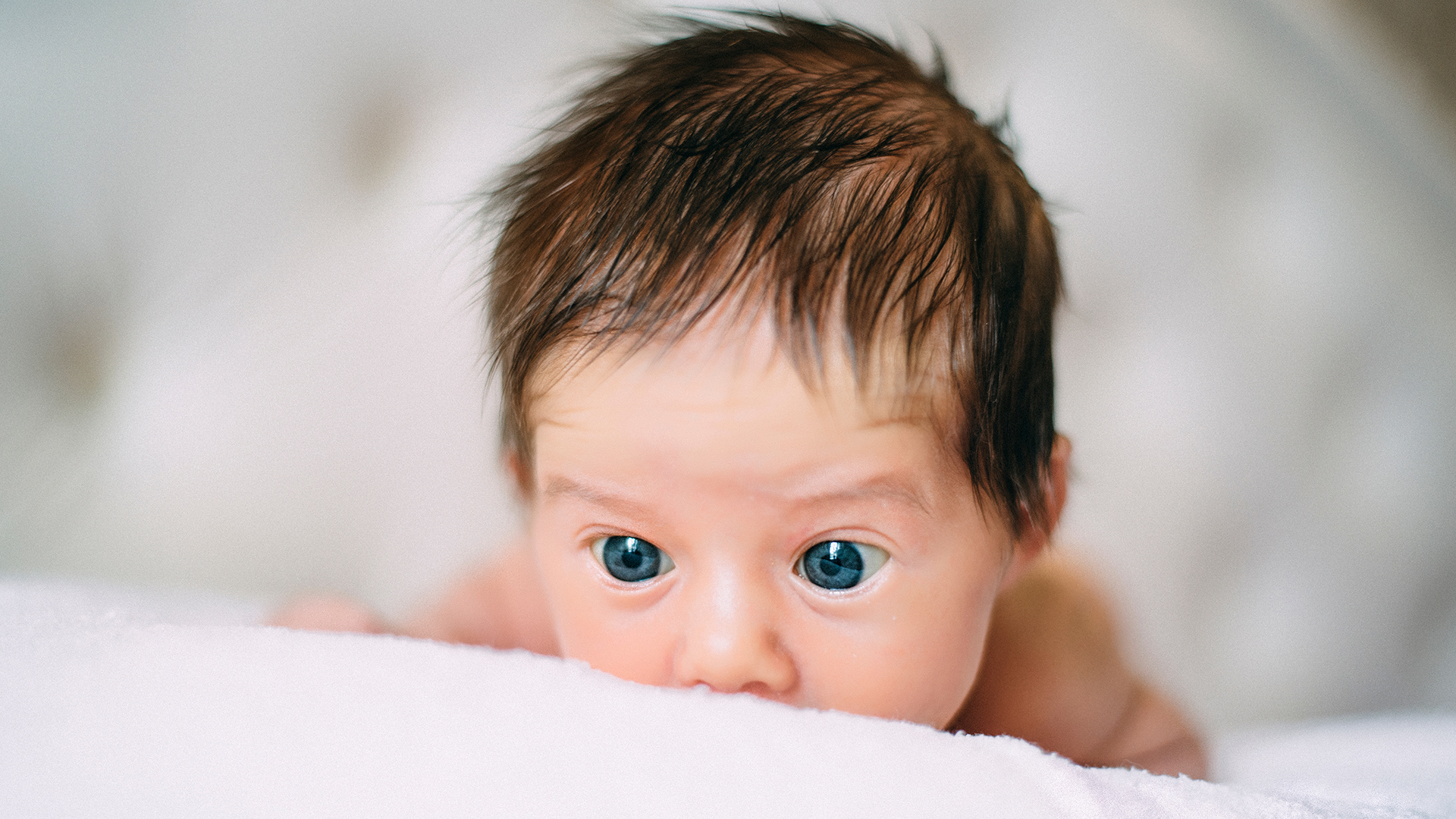Why Do Babies Lose Their Hair?
Don't get too attached to your newborn's hair, it won't be around for long.

The first weeks and months of a baby's life are full of big changes. But what new parents may not have expected are the tiny hairs left on their newborn's mattress. After a few months, their baby's once-full head of hair has become thin and patchy — or nearly bald.
Fortunately, infant hair loss is rarely a concern. A fetus starts growing hair during the first trimester. But whether an infant is born with a layer of fuzz or a thick mop, all lose at least some hair. In fact, hair loss simply means an infant is making the huge adjustment to life outside the womb.
On an adult's head, each strand of hair goes through a phase when it's growing and when it's not — and when hair isn't growing, it can also shed. At any given time, only a small percentage of your hair is in this latter stage, and only about 50 to 100 strands are lost per day. Not so for a newborn.
Related: Why Don't Newborns Have Tears or Sweat?
"Big hormonal shifts happen in a baby's body after they are born, which can cause all of their hairs to enter the resting phase at the same time," explained Sage Timberline, a pediatrician at the University of California, Davis, Children's Hospital in Sacramento, California. That means all of a baby's hair can shed at once.
Both mother and baby undergo huge hormonal shifts during labor, which is necessary for a successful birth. The onset of labor alerts a baby's body to start producing hormones that are crucial for life outside the womb. Some hormones help the baby's arteries and veins develop, ensuring that the organs receive ample blood during labor and after the umbilical cord is cut, Timberline told Live Science.
One hormone, called cortisol, helps babies' lungs mature, enabling them to take their first breath, Timberline said. It also helps the baby's body produce its own energy and heat. In adults, cortisol plays a role in a vast array of physiological functions, from regulating metabolism to triggering your "fight-or-flight" response. It's considered the stress hormone, and during times of stress, cortisol helps direct energy toward vital functions and away from less important tasks.
Get the world’s most fascinating discoveries delivered straight to your inbox.
"Labor puts a good kind of stress on a baby," Timberline said. The stress triggers cortisol production, which channels energy toward the developmental changes crucial for survival — and away from nonessential functions such as hair growth.
Hair today, gone tomorrow
After birth, all of a baby's hair stays in the resting phase until more resources become available. Hair usually starts to shed at 8 to 12 weeks of age, and begins to grow back at around 3 to 7 months. But it's not until around 2 years of age that thicker hair emerges. The specific timing and pattern of hair loss and growth depends on a number of factors, including sex, ethnicity, genetics, the conditions of birth (premature, early or late; or vaginally or by cesarean section), and a baby's nutrition.
And no, what you may have heard about shaving a baby's head to allow hair to grow back thicker isn't true. The ends of a baby's hair are tapered, and cutting them just leaves them truncated and temporarily looking darker and thicker.
In fact, the number and location of individual hair follicles are genetically determined, said Katie Ellgass, a pediatrician at Stanford Children's Health Altos Pediatric Associates in Los Altos, California. Once born, a baby doesn't form any new follicles.
A baby's hair color and texture can also change several times during the first few months or years. But it's hard to predict how and when, Timberline said. "All we can do is enjoy each hairstyle while it lasts," she said, "and don't get too attached!"
Originally published on Live Science.



